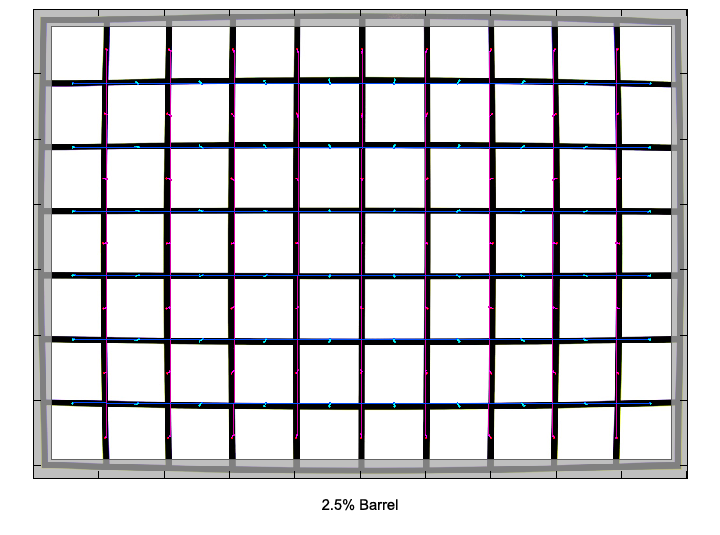|
Page 2 of 3

Distortion
Typical for ultra-wide lenses, the Tokina shows quite some barrel distortion at its shortest focal length. At an amount of 2.5% the distortion is clearly visible. Compared to similarly wide lenses the value is rather low, however, we've seen worse here.
Zooming in, the level of distortion decreases to a moderate amount at 21mm. Around 28mm most of the image is free of distortion, but extreme corners already show some stretching as first signs of beginning pincushion distortion. The latter remains on a low level, though, even at the longest focal length its amount is only 0.3%.
|
Move the mouse cursor over the focal length text marks below to observe the respective distortions
|
| 17mm |
21mm |
28mm |
35mm |
|

|
The chart above has a real-world size of about 120x80cm.
Vignetting
The lens produces fairly significant light fall-off towards the corners at its widest setting, especially at the largest aperture. As usual stopping down reduces the issue, however even at f/11 there's still one stop of vignetting left.
At all other focal lengths, vignetting is less pronounced and actually quite well controlled.
We're performing our vignetting analysis based on
(uncorrected) JPEGs straight from the camera. The JPG engine of the Nikon D3x features a rather flat
gradation curve, thus has a moderate contrast characteristic, resulting in comparatively low vignetting figures - the
corresponding Canon figures are roughly 40% higher due to the more
aggressive default contrast setting.

MTF (resolution)
The lens delivers excellent resolution in the image center at its widest setting, straight from the maximum aperture. The borders and corners are a very different story, though. The borders are just fair wide open, but recover to very good values by stopping down. The extreme corners show even less resolution wide open and don't get better than good on our scale.
At 21 mm the image center resolution is very good wide open and excellent when stopped down. From f/11 onwards the resolution drops to lower levels again due to diffraction. The borders and corners show good resolution at f/4 and increase to very good values from f/5.6 onwards.
At 28mm, the situation is very similar, but the borders and corners perform a tad lower.
At 35mm there is a general drop of resolution across the frame. In the image center, the resolution still reaches excellent values when stopped down, but only just. The borders and corners both don't get better than good on our scale, even when stopped down.
Please note that the MTF results are not directly comparable across the different systems!
Below is a simplified summary of the formal findings. The chart shows line widths
per picture height (LW/PH) which can be taken as a measure for sharpness.
If you want to know more about the MTF50 figures you may check out the corresponding
Imatest Explanations

Chromatic Aberrations (CAs)
Tokina lenses have a reputation of showing a little more lateral CAs (color shadows at harsh contrast transitions) than average. This is also true for the AT-X 17-35, where CAs are well above 2 px for most of the tested focal lengths and apertures.
However, CAs can easily be corrected in software or by the camera itself (most modern Nikon DSLRs remove CAs themselves if you shoot JPGs).

Flare/Glare
The lens handles backlight quite well, but at certain angles produces a fair amount of orange glow in one of the image corners.

|